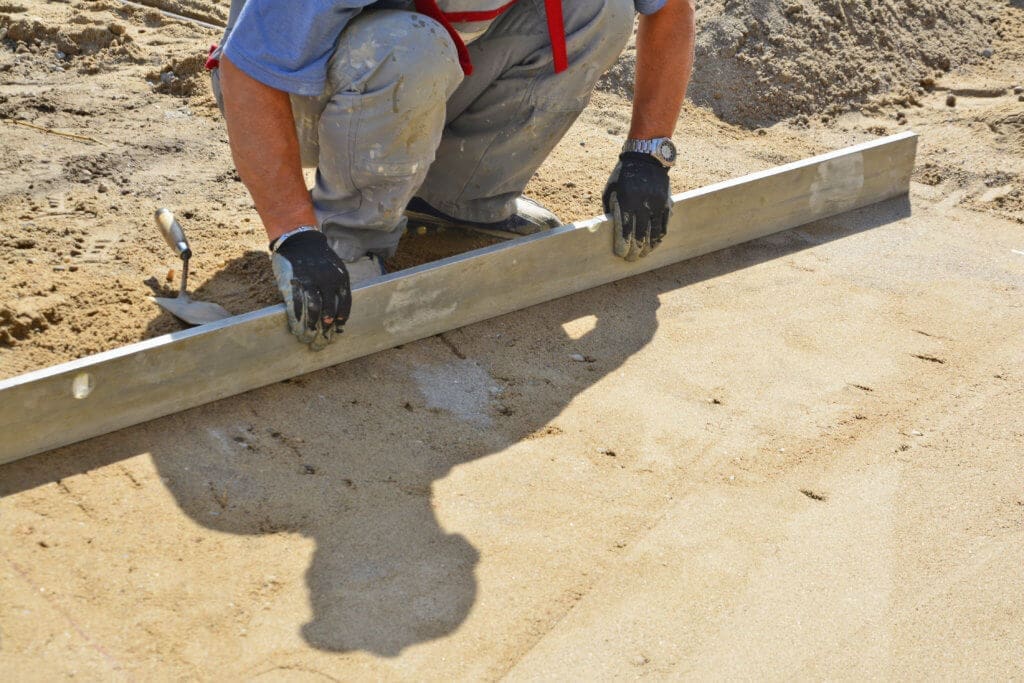Usually, when we think of sand, we think of the soft ground along our nation’s coastlines and lake borders. As a kid, you likely enjoyed taking your shoes off to feel the texture of the tiny granules between your toes. However, the varieties of sand are significant, and not all sand is the same. When you’re working on a landscaping project that requires sand as a base, filler, or part of an adhesive, you must use the correct type of sand for the job.
Five Popular Types of Sand
- Playground sand. It’s common to find “playground sand” or beach sand in most home improvement stores. The purpose is precisely as its name

implies. Playground sand is fine-textured sand free of silica, making it safe for children to play in. This material is optimal for play areas–from backyard sandboxes to beach volleyball courts. It’s also commonly used in decorative or crafting-related projects. Playground sand should not be used under pavers or construction because it is too fine and will wash away easily.
- Paver sand. Paver sand is similar to playground sand, but the granules are mixed with a silica additive to make them more course and binding. As the name suggests, paver sand is often used for leveling pavers in constructing walkways and patios. It’s important to discuss your project with landscaping experts to determine if paver sand or a more durable solution like utility sand will provide the best foundation based on size and function.
- Utility sand. Utility sand is courser in texture and may contain white, gray, beige, tan, and brown particles. This sand is typically produced by crushing industrial quartz. With uniformly sized particles, the sand compacts exceptionally well. Utility sand is perfect for many construction applications, including trench fill, backfill behind retaining walls and fill underneath concrete slabs or paver bricks.
- Concrete sand. Concrete sand is made at a quarry by grinding down natural materials such as granite, gneiss, trap stone, or limestone. It creates a strong material for use in concrete production but is also frequently used for similar applications such as in the construction of pools and patios.
- Masonry sand. Often called “white sand,” it is also available in beige or tan. It’s fine-grained, clean sand that works well as an ingredient in mortar and concrete used to lay bricks, blocks, and stones. Its made similarly to concrete sand, just ground down to much finer particle size and often washed to give it a clean appearance.
What is polymeric sand?
Polymeric sand is simply sand blended with polymers that act as bonding agents. The polymers activate and help bind the sand particles together when properly installed. It’s highly durable and will resist erosion, which is essential underneath and between paving stones. Polymeric sand also has the benefit of discouraging plant growth, which may help keep your paver patio looking new for a longer time.
Still unsure? Talk with the experts at Hilton Landscape Supply.
Hilton Landscape Supply has experts on staff to answer all of your landscaping construction questions. We can work with you to determine the best products for your specific project. We’ll even haul your products directly to the building site to make your work easier. And once your initial project is finished, we’ll continue to serve you with planting mulches, organic compost, decorative rock, and much more to transform your entire yard into your outdoor paradise. Visit us today to see everything we have available for you!

